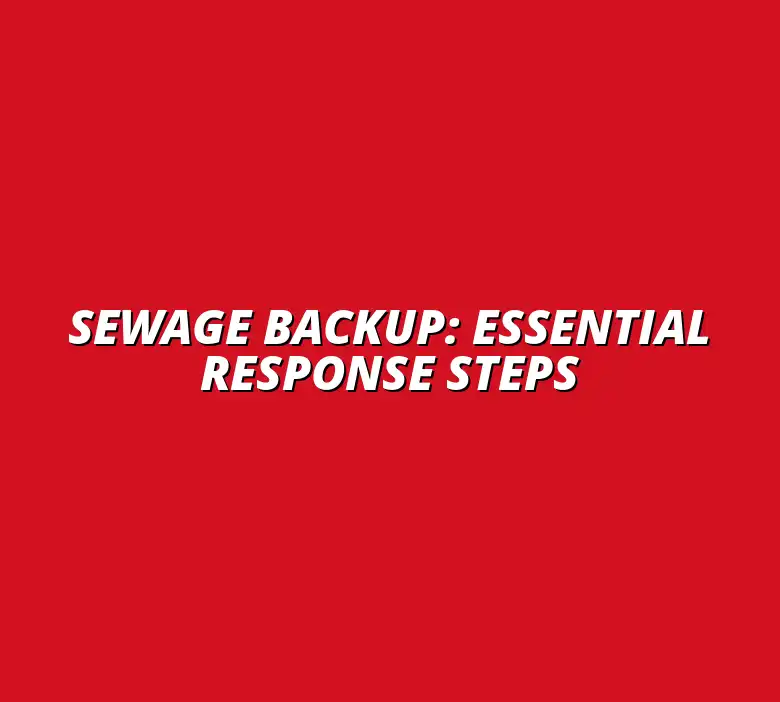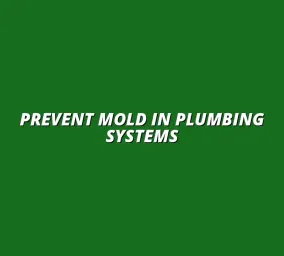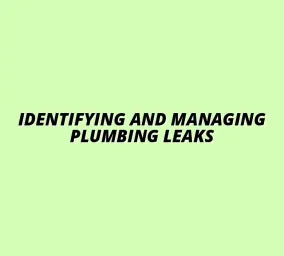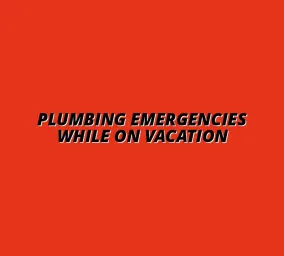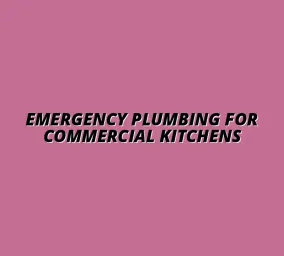Sewage Backup: Essential Response Steps
Understanding Sewage Backup: Causes and Risks
Sewage backups can be a homeowner's nightmare. These situations occur when wastewater from drains or toilets flows back into your home instead of moving through the plumbing system. Understanding the causes and risks associated with sewage backups is crucial to preventing damage and ensuring safety.
By identifying the common reasons behind backups, homeowners can take proactive steps to protect their property. Additionally, understanding the risks associated with sewage backups can help prioritize immediate actions in case of an emergency.
Identifying Common Causes of Sewage Backups in Basements
There are several factors that can lead to sewage backups, especially in basements. Recognizing these causes can help you take preventive measures before a backup occurs. Here are some of the most common culprits:
- Clogged Pipes and Drains: Accumulation of grease, hair, or foreign objects can create blockages.
- Tree Root Intrusion: Roots can invade pipes, causing physical obstructions.
- Heavy Rainfall: Excess rainfall can overwhelm sewer systems, leading to backups.
Clogged Pipes and Drains
Clogged pipes are a frequent cause of sewage backups. When drains become blocked, water cannot flow freely, and pressure builds up in the system. To prevent this, regular maintenance, like cleaning out sink traps and using drain strainers, can be very helpful! For example, learning how to fixing a clogged kitchen sink can significantly reduce the risk of backups.
It’s also a good idea to avoid flushing inappropriate items down the toilet, as this can lead to serious clogs. If you do experience a blocked toilet drain, there are steps you can take to clear the blockage. Remember, what goes down the drain affects the whole plumbing system!
Tree Root Intrusion and Other Physical Blockages
Tree roots can be surprisingly strong and may grow into sewer lines, causing significant issues. This type of blockage often requires professional intervention to remove. Regular inspections of your plumbing system can help pinpoint where tree roots might be intruding.
Other physical blockages can stem from misplaced construction debris or even collapsed pipes. Clearing away any potential hazards is a smart strategy to maintain a healthy sewer system!
Heavy Rainfall and Flooding Conditions
Heavy rainfall can overwhelm municipal sewer systems, leading to backups even in homes that are otherwise well-maintained. During such weather, it’s crucial to monitor water levels outside your home and ensure that drainage systems are clear.
Installing sump pumps or backwater valves can provide an extra layer of protection against flooding. Being proactive during heavy storms can save a lot of trouble down the line! For more information on preventing sewer line blockages, check out these preventative tips.
Recognizing the Dangers Associated with Sewage Backups
Sewage backups pose serious risks that shouldn't be ignored. Understanding these dangers can motivate homeowners to take swift action when a backup occurs. Here are some of the major risks:
- Health Risks: Exposure to contaminated water can lead to illnesses.
- Structural Damage: Sewage can weaken foundations or cause extensive damage to walls and flooring.
- Environmental Impacts: Untreated sewage can contaminate local waterways.
Health Risks From Contaminated Water
The most concerning risk from sewage backups is health-related. Contaminated water can carry bacteria and viruses that lead to serious illnesses. If you are exposed, it’s important to wash thoroughly and seek medical advice if you feel unwell.
Always prioritize safety by avoiding contact with sewage water. If you suspect a backup, immediate action is essential to protect yourself and your family! If you're facing a clogged drain emergency, quick action is critical.
Structural Damage to Your Home
Sewage can cause significant structural damage to your home. Prolonged exposure can lead to rotting wood, mold growth, and compromised foundations. It’s important to address sewage issues promptly to prevent costly repairs!
Regular maintenance and inspections can help catch small issues before they escalate into major problems. Protecting your home from these dangers should be a top priority!
Potential Environmental Impacts
Sewage backups don’t just affect your home; they can also harm the environment. When untreated sewage leaks into local waterways, it can disrupt ecosystems and pollute drinking water supplies. Being mindful of your sewage systems helps keep the community safe!
Consider investing in solutions like gray water systems or rainwater harvesting to reduce the load on municipal systems. Taking steps to protect the environment is a win-win for everyone!
Effective Cleanup and Restoration Techniques
When dealing with a sewage backup, it's crucial to approach the cleanup and restoration process methodically. The right techniques can help ensure safety and efficiency, allowing you to restore your home quickly. Let’s dive into the steps you need to take for effective cleanup!
Organizing your cleanup begins with preparing your space and gathering the necessary tools. This preparation can make a significant difference in how smoothly the process goes. Keeping safety as your top priority is essential!
Preparing for the Cleanup Process
Before starting the cleanup, equip yourself with the right safety gear and equipment. This is vital to protect yourself from harmful contaminants that may be present in the sewage.
- Protective Clothing: Wear gloves, masks, and waterproof boots.
- Cleaning Supplies: Have disinfectants, trash bags, and mops ready.
- Water Removal Equipment: Consider using wet vacuums or pumps for effective water removal.
Additionally, understanding local regulations regarding sewage cleanup can save you from potential fines or legal issues. Many regions have specific guidelines on how to dispose of contaminated materials and handle sewage safely. If you experience a sewer pipe backup, knowing the next steps is crucial.
Gathering Necessary Safety Gear and Equipment
Using the right safety gear is essential for protecting yourself during the cleanup. Make sure you have:
- Heavy-duty gloves to prevent skin contact with sewage.
- Face masks to avoid inhaling hazardous fumes.
- Goggles to shield your eyes from splashes.
Having a first aid kit nearby is also a good idea in case of minor injuries during the cleanup.
Understanding Local Regulations for Sewage Cleanup
Every community has rules about how to handle sewage backups. Before starting, check with local authorities or environmental agencies. This can include:
- Disposal methods for contaminated materials.
- Permit requirements for larger cleanup operations.
- Notification guidelines for local health departments.
By following these regulations, you can ensure a safer cleanup process while avoiding legal complications.
Thoroughly Cleaning and Disinfecting Affected Areas
Once you're prepared, it's time to focus on cleaning and disinfecting the affected areas. This step is crucial for eliminating harmful bacteria and preventing further issues.
Start by removing any contaminated materials, such as carpets, drywall, or furniture that cannot be cleaned thoroughly. Proper disposal is essential to ensure safety!
Removing Contaminated Materials Safely
When removing contaminated items, follow these guidelines:
- Wear protective gear at all times.
- Seal contaminated items in plastic bags before disposal.
- Dispose of items according to local regulations.
This practice helps to minimize the spread of contaminants in your home.
Using the Right Cleaning Solutions for Sewage Cleanup
Choosing the right cleaning and disinfecting solutions is just as important. Some effective options include:
- Chlorine bleach: Effective for disinfection but must be used carefully.
- Commercial sewage cleaners: Formulated specifically for these situations.
- Vinegar and baking soda: Natural options for minor cleaning.
Always follow the manufacturer's instructions for safety and effectiveness!
Preventing Future Sewage Backups
Once the cleanup is complete, it's important to take steps to prevent future sewage backups. Regular maintenance and smart planning can save you from future headaches. Regular drain cleaning offers many essential benefits.
Here are some strategies to consider for ongoing maintenance:
Regular Maintenance and Inspections of Plumbing Systems
Make it a habit to check your plumbing systems regularly. This includes:
- Inspecting pipes for leaks or corrosion.
- Clearing drains of clogs or debris.
- Scheduling a professional inspection at least once a year.
By staying proactive, you can catch potential problems before they escalate. For Birmingham residents, a plumber in Deritend, Birmingham can provide expert assistance.
Implementing Landscaping Solutions to Prevent Flooding
Landscaping can play a significant role in preventing flooding and sewage backups. Here are some effective suggestions:
- Grading your yard: Ensure your yard slopes away from the foundation.
- Installing drainage systems: Consider French drains or rain gardens.
- Planting absorbent vegetation: Use plants that can soak up excess water.
Proper landscaping not only enhances your home’s aesthetics but also its resilience against flooding.

